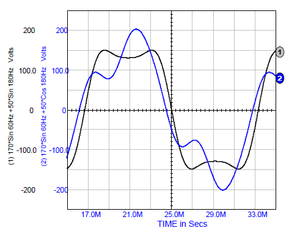Measuring RMS Values of Voltage and Current
Featured Product from Dataforth Corporation

VOLTAGE (CURRENT) MEASUREMENTS
Standard classic measurements of voltage (current) values are based on two fundamental techniques either "average" or "effective".
The "average" value of a function of time is the net area of the function calculated over a specific interval of time divided by that time interval.
Specifically,
(Equation 1)
If a voltage (current) is either constant or periodic, then measuring its average is independent of the interval over which a measurement is made. If, on the other hand, the voltage (current) function grows without bound over time, the average value is dependent on the measurement interval and will not necessarily be constant, i.e. no average value exists. Fortunately in the practical electrical world values of voltage (current) do not grow in a boundless manner and, therefore, have well behaved averages. This is a result of the fact that real voltage (current) sources are generally either; (1) batteries with constant or slowly (exponentially) decaying values, (2) bounded sinusoidal functions of time, or (3) combinations of the above. Constant amplitude sinusoidal functions have a net zero average over time intervals, which are equal to integer multiples of the sinusoidal period. Moreover, averages can be calculated over an infinite number of intervals, which are not equal to the sinusoidal period. These averages are also zero. Although the average of a bounded sinusoidal function is zero, the "effective" value is not zero. For example, electric hot water heaters work very well on sinusoidal voltages, with zero average values. Continue Reading Application Note










